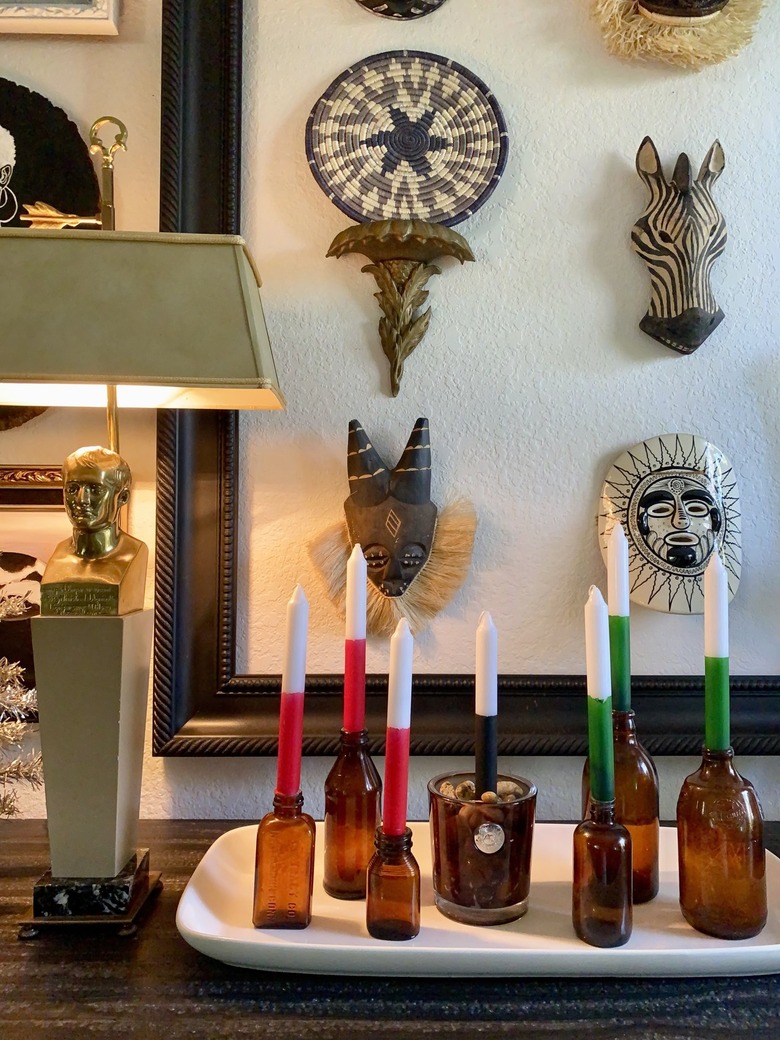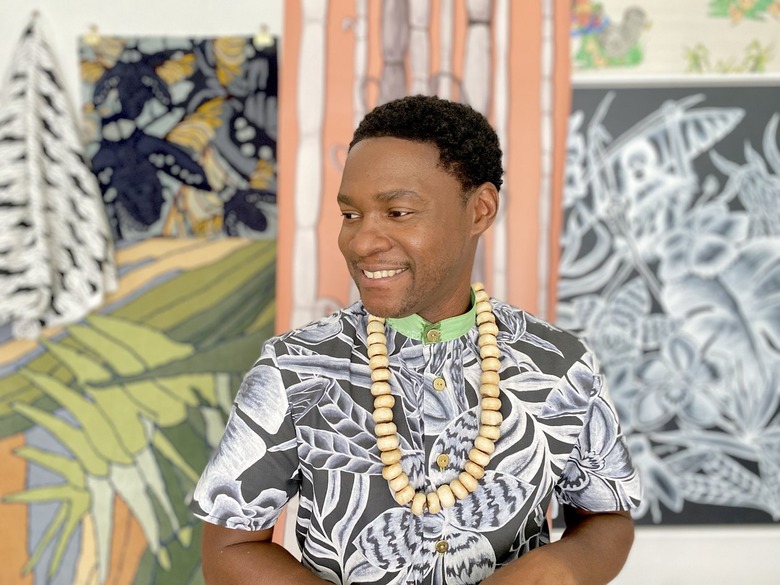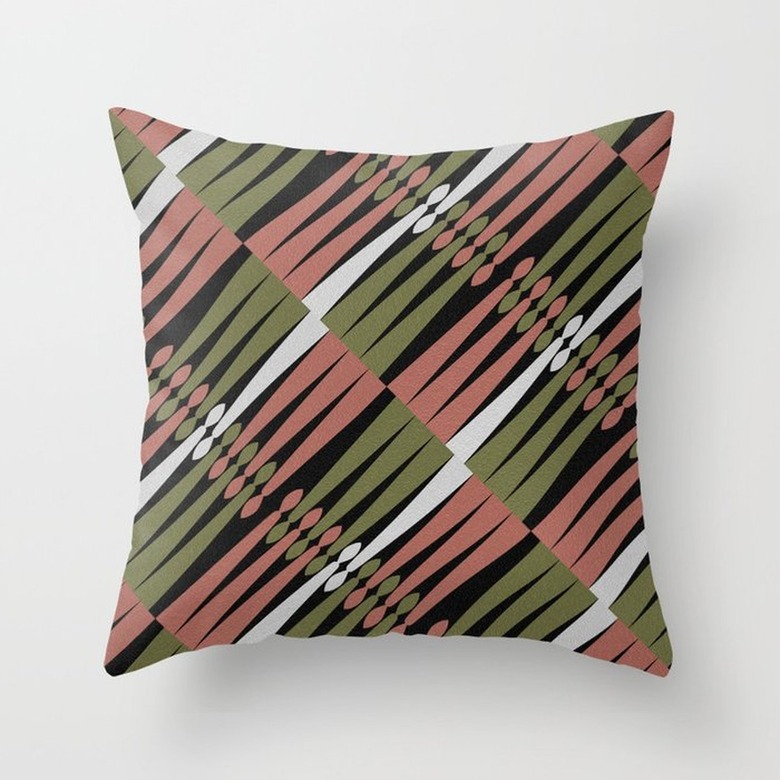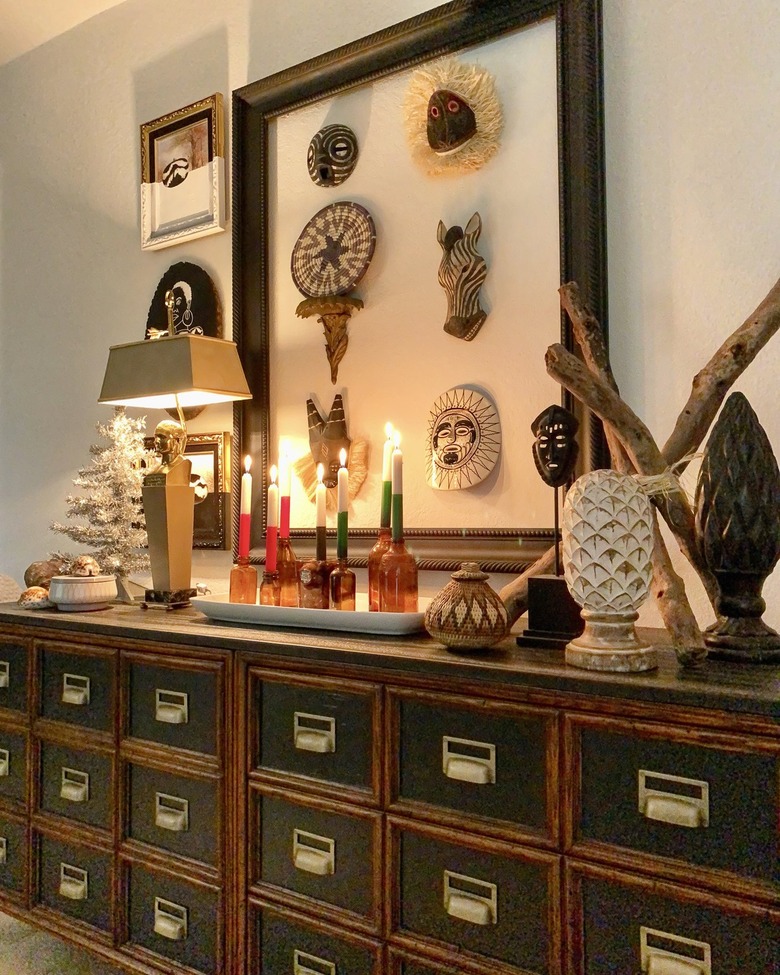How To Create A Joy-Inducing Kwanzaa Display, According To Designer Kenzie Leon Perry
In the United States, millions of people celebrate Kwanzaa each year. A cultural holiday created by activist, author, and professor Dr. Maulana Karenga in 1966, Kwanzaa highlights African culture and traditions as a way of empowering and uniting people of African descent in America.
Observed from December 26 through January 1 and modeled on traditional African harvest festivals, the week-long holiday invites people of all faiths, from Muslims and Buddhists to those who follow ancestral traditions like Yoruba and Vodou, to participate in dialogues centered around the seven principles. Known as the Nguzo Saba, the seven principles are unity (Umoja), self-determination (Kujichagulia), collective work and responsibility (Ujima), cooperative economics (Ujamaa), purpose (Nia), creativity (Kuumba), and faith (Imani).
Each day of the holiday corresponds to one of these principles, encouraging celebrants to meditate on ideals meant to affirm African diasporic history and culture. According to the New York Times, Kwanzaa activities include poems, dances, honoring ancestors, and harambee chants. There is also the karamu, or special meal, a glorious feast that brings together family and friends alike. There is no set menu, allowing the meals to reflect the particular backgrounds of the hosts.
As a young child, Miami-based designer Kenzie Leon Perry was introduced to Kwanzaa through church he grew up in. "I'd go to various Kwanzaa events that were set up through the library, school, or church," he tells Hunker. However, the visual artist and interior designer never observed the holiday at home, since his immediate family only celebrated Christmas.
Cut to 2020. Perry, who had been working in hospitality for a number of years as an interior designer, was furloughed from his job due to the coronavirus pandemic. He decided to use his time away from hospitality to launch his own firm and founded Ze Haus Interior Design Studio. In addition to working with hospitality, commercial, and residential spaces, the firm designs wallpapers, textiles, and fine art.
Inspired by his cousin, who, Perry says, "celebrates Kwanzaa every year and posts her own experiences on Instagram," the designer decided to make his own Kwanzaa display soon after launching his brand. The holiday took on new resonance during the COVID lockdown, since he couldn't partake in the usual traditions with his family and loved ones. "I thought it would be a great opportunity for me to participate and educate other people," he says. Perry also channeled his research into his brand, creating pillows and other decor accessories inspired by the symbols of Kwanzaa, including patterns based on the Pan-African colors red, green, and black.
Kwanzaa's seven principles are represented by the Mishumaa Saba, or seven candles, which are placed on the Kinara, or candleholder. These candles usually reflect the aforementioned Pan-African colors, boasting three red candles, three green candles, and one black candle in the middle. The kinara and candles, along with other items like the unity cup, crops, and gifts, are gathered and displayed on a woven mat placed on a table or other communal location in the home. When it came to his first display, Perry says, "I wanted to use things that I already had around the house because Kwanzaa is all about using resources that you currently have."
Perry used brown amber jars he had purchased in Tennessee as his kinara, creating his own take on the Kwanzaa staple. He also obtained white candles and painted the bottom portions red, green, and white, another way of infusing his own creative vision into the display. To this he added other Afro-centric items from his personal collection, like paintings and a series of African masks collected from his travels.
As for his own rituals during the seven-day celebration, Perry says he used the time to go inward: "Every day I read the principle, lit the candle, and just sat and reflected on the principle of the day." Although he gathers insight from all the ideals, Ujamaa, which is cooperative economics, holds extra significance for the designer. As an artist and Black business owner, he understands the importance of supporting and sustaining other BIPOC artists and shop owners.
For those looking to celebrate Kwanzaa for the first time, Perry suggests "looking outside your home" for decorative inspiration. "I love working with driftwood and different branches that fall because it brings in an organic element," he says. "Kwanzaa is about honoring and affirming your roots. I think we're all connected to the Earth, whether your descendants are from Africa, the Caribbean, or the United States."



